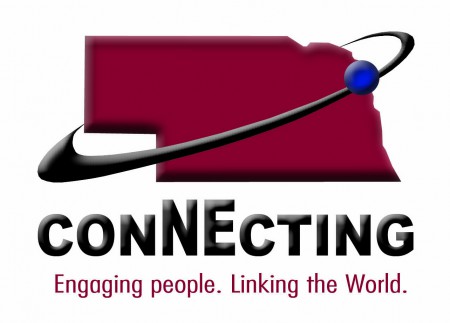SNG Engaged to Provide Local Businesses with Personalized, Data-based Roadmaps to Improve Efficiencies and Drive Growth
 (August 13, 2013) Lincoln, Nebraska – The Nebraska Broadband Initiative today announced they’ve engaged SNG to help drive business utilization, and the accompanying benefits, for regional economic development. SNG will demonstrate for local businesses the return on investment that can be realized by capitalizing on recent investments in Nebraska broadband. The Broadband Mapping and Planning Initiative is funded through a grant to the Nebraska Public Service Commission by the U.S. Department of Commerce’s National Telecommunication and Information Administration and aims to increase broadband adoption and utilization. The University of Nebraska is leading the planning efforts. Planning project partners include the University of Nebraska-Lincoln, Nebraska Information Technology Commission, Nebraska Department of Economic Development and Aim Institute.
(August 13, 2013) Lincoln, Nebraska – The Nebraska Broadband Initiative today announced they’ve engaged SNG to help drive business utilization, and the accompanying benefits, for regional economic development. SNG will demonstrate for local businesses the return on investment that can be realized by capitalizing on recent investments in Nebraska broadband. The Broadband Mapping and Planning Initiative is funded through a grant to the Nebraska Public Service Commission by the U.S. Department of Commerce’s National Telecommunication and Information Administration and aims to increase broadband adoption and utilization. The University of Nebraska is leading the planning efforts. Planning project partners include the University of Nebraska-Lincoln, Nebraska Information Technology Commission, Nebraska Department of Economic Development and Aim Institute.
SNG will provide Nebraska’s small businesses with an “eSolutions Inventory,” a self-assessment for businesses centered on Internet applications (esolutions) being currently utilized, the ones that aren’t, and the impact on their business. These same businesses will then receive recommendations for esolutions to adopt, and the ROI accompanying each. ROI and expected benefits are drawn from SNG’s rich database of over 11,000 business’ broadband usage and accompanying impacts, enabling a comparison of an individual Nebraska business usage and impacts with peers (industry, size, etc.) across the U.S. who have successfully employed esolutions.
“We wanted to increase efforts to connect with businesses, build capacity within the state to work with businesses and to measure change and impact. ,” explained Charlotte Narjes, UNL Broadband Project Lead. “By engaging SNG and their one-of-a-kind database, businesses will receive a personalized scorecard that helps to identify what they can do with technology, but also the expected benefits with each adopted Internet application.”
In addition to capturing individual results, the SNG study will provide statewide and regional insights to help inform and craft broadband strategies for Nebraska.
“This approach will engage Nebraska businesses by showing them how broadband can help,” explained Jim Keeler, Business Broadband Manager. “By providing our entrepreneurs with the knowledge they need to leverage the Internet and find new ways to use it, we’re giving them an edge to compete in the 21st century.”
“By taking the current state of broadband use and comparing it to like-sized companies in similar industries, we’re able to educate businesses on best practices for broadband utilization and provide specific recommendations,” explained Michael Curri, president of SNG. “Most importantly, we’re helping Nebraska companies compete and thrive in a digital world.”.
 Strategic Networks Group has been partnering with the Commonwealth of Kentucky and Michael Baker Jr., Inc., over the past three years helping to measure broadband gaps, opportunities, and utilization rates.
Strategic Networks Group has been partnering with the Commonwealth of Kentucky and Michael Baker Jr., Inc., over the past three years helping to measure broadband gaps, opportunities, and utilization rates.
Kentucky has made strides in availability, connectivity, and speed over the past few years. What didn’t change between 2010 and 2012? Utilization.
Utilization (as expected) is lagging behind, with limited efforts to drive it before 2012. So now comes the hard part – driving uptake and utilization. Kentucky understands the importance of utilization in capturing the economic and social benefits of broadband and they’re now making a push towards driving improved Internet utilization by businesses and local governments in 2013.
What’s informative in this case is simple – in many situations, utilization does not just happen on its own. In other words, while better networks were being built, the use of Internet-based applications barely grew among businesses and organizations. We know this by tracking the Digital Economy index (DEi), a proprietary measure that reflects Internet application (or eSolution) usage. The DEi barely changed in the commercial sector –– meaning that the use of esolutions hardly grew from 2010 to 2012.
The commercial DEi score of 6.41 in 2012 (compared to 6.26 in 2010) is neither terrible nor great (10 is the highest score possible). The real question is – why did it grow by only 2% when in the same State the DEi scores changed significantly among households? Specifically, the DEi score for households rose by almost 20%, from 5.36 to 6.35.
In terms of actual connection speeds a similar dynamic was found, with households making larger improvements than commercial subscribers. Between 2010 to 2012 the number of residential subscribers recording a download speed of less than 1.5 mbps dropped by 12 percentage points (from 48% in 2010 of all respondents to 36% in 2012); commercial subscribers with less than 1.5 mbps tested download speed only dropped by 5 percentage points (from 30% in 2010 to 25% in 2012). Put another way, residential subscribers have adopted broadband at more than twice the rate of commercial subscribers between 2010 and 2012.
Why do we see so little movement with businesses but a significant uptick in DEi scores from households? Marketing.
While household members are being barraged to adopt all sorts of esolutions – by advertising, friends and family members – businesses pretty much take an “if it’s not broke, don’t fix it” approach. They are slow to act without a compelling business case.
Meanwhile everywhere they turn, consumers are told to watch new series on Netflix, get connected via Twitter or Facebook, listen to Pandora, try Vonage for VoIP, go to college online, etc.
Keep in mind that SNG measures different esolutions for households and businesses – no one cares (or wants) an employee to spend their day marathon-ing watching online movies or television shows on Netflix at their desk.
The takeaway is simple – business Internet applications are more complicated, take longer to adopt, and require education and a personalized roadmap to benefits and ROI.
Market forces may make “build it and they will come” a viable strategy solution for most households… eventually, thanks to private sector advertising… businesses need and want guidance for what they should be doing online.
Why Does It Matter?
If you’re a network operator, you need subscribers. However, if businesses don’t understand the immediate benefits and business value of connecting to an ultra-fast network, they won’t become subscribers.
If you’re in economic development, it is important that businesses in your area effectively use esolutions (Internet enabled productivity tools) to become more competitive – but that requires not just driving users to new, ultra-fast networks but more importantly it requires driving utilization.
For an individual business or organization, SNG’s research shows that increasing utilization by 10% means:
- Increasing revenues by 24%
- Decreasing costs by 7%
Because this growth is driven by broadband, it is important that economic development activities support and complement the marketing of the network operators to achieve network sustainability. This translates into business growth, local economic growth, new jobs, increased local tax base, etc.
But How?
How do you convince any business to do anything? You make a business case. Softer ways to make a compelling case would be success stories, traditional marketing around Internet applications, etc. But changing the way someone does business is typically more difficult with traditional marketing.
In SNG’s experience, what’s needed is one-to-one marketing to businesses for broadband uptake and utilization. We have developed a beginning-to-end package of services needed to make individual businesses and communities more globally competitive – we call this our Digital Economy Business Development Program (DEBDP)
The DEBDP process has five core steps:
- Self-Assessment – A 20-minute online business self-assessment survey to ascertain just how effective (or ineffective) an organization is currently leveraging broadband’s potential and benefits.
- Initial Business Feedback – Participating businesses receive a Digital Economy index (DEi) Scorecard, a one-page document that outlines how they are doing in comparison to their peers and three immediate suggestions to drive up revenues and improve efficiencies.
- In-Depth, Individualized Action Plans – Utilizing the DEi scorecard and a live scenario generator (the DEi Calculator) that draws on SNG’s extensive database of tens of thousands of business and institutions, the DEBDP provides a suite of tools and knowledge base needed to take each business through their individual results and explore the financial impact that implementing specific e-Solutions will have on their business.
- Ongoing Online Support – Customized Web portal for local businesses to access. The “how-to” web pages, known as Digital Economy e-Learning Modules, are business-oriented educational resources designed to help businesses successfully use broadband and maximize their benefits from e-Solutions.
- Impact Tracking – Understand how your broadband (and accompanying education) pays off with mechanisms built into the program to track participation, assess progress and collect data on the impacts of broadband adoption by participating businesses.
These steps need to be locally owned because personalizing the value of the next generation network requires a grassroots approach that works one-on-one with individual businesses.
SNG offers an unmatched resource for businesses to understand the benefits of utilization – and most importantly, customized benchmarking that focuses on the economic advancement for your region. SNG builds local capacity to understand what needs to be done and a sustainable locally owned process to reap the rewards of a digital economy.
 (August 13, 2013) Lincoln, Nebraska – The Nebraska Broadband Initiative today announced they’ve engaged SNG to help drive business utilization, and the accompanying benefits, for regional economic development. SNG will demonstrate for local businesses the return on investment that can be realized by capitalizing on recent investments in Nebraska broadband. The Broadband Mapping and Planning Initiative is funded through a grant to the Nebraska Public Service Commission by the U.S. Department of Commerce’s National Telecommunication and Information Administration and aims to increase broadband adoption and utilization. The University of Nebraska is leading the planning efforts. Planning project partners include the University of Nebraska-Lincoln, Nebraska Information Technology Commission, Nebraska Department of Economic Development and Aim Institute.
(August 13, 2013) Lincoln, Nebraska – The Nebraska Broadband Initiative today announced they’ve engaged SNG to help drive business utilization, and the accompanying benefits, for regional economic development. SNG will demonstrate for local businesses the return on investment that can be realized by capitalizing on recent investments in Nebraska broadband. The Broadband Mapping and Planning Initiative is funded through a grant to the Nebraska Public Service Commission by the U.S. Department of Commerce’s National Telecommunication and Information Administration and aims to increase broadband adoption and utilization. The University of Nebraska is leading the planning efforts. Planning project partners include the University of Nebraska-Lincoln, Nebraska Information Technology Commission, Nebraska Department of Economic Development and Aim Institute.
 Strategic Networks Group has been partnering with the Commonwealth of Kentucky and Michael Baker Jr., Inc., over the past three years helping to measure broadband gaps, opportunities, and utilization rates.
Strategic Networks Group has been partnering with the Commonwealth of Kentucky and Michael Baker Jr., Inc., over the past three years helping to measure broadband gaps, opportunities, and utilization rates.

